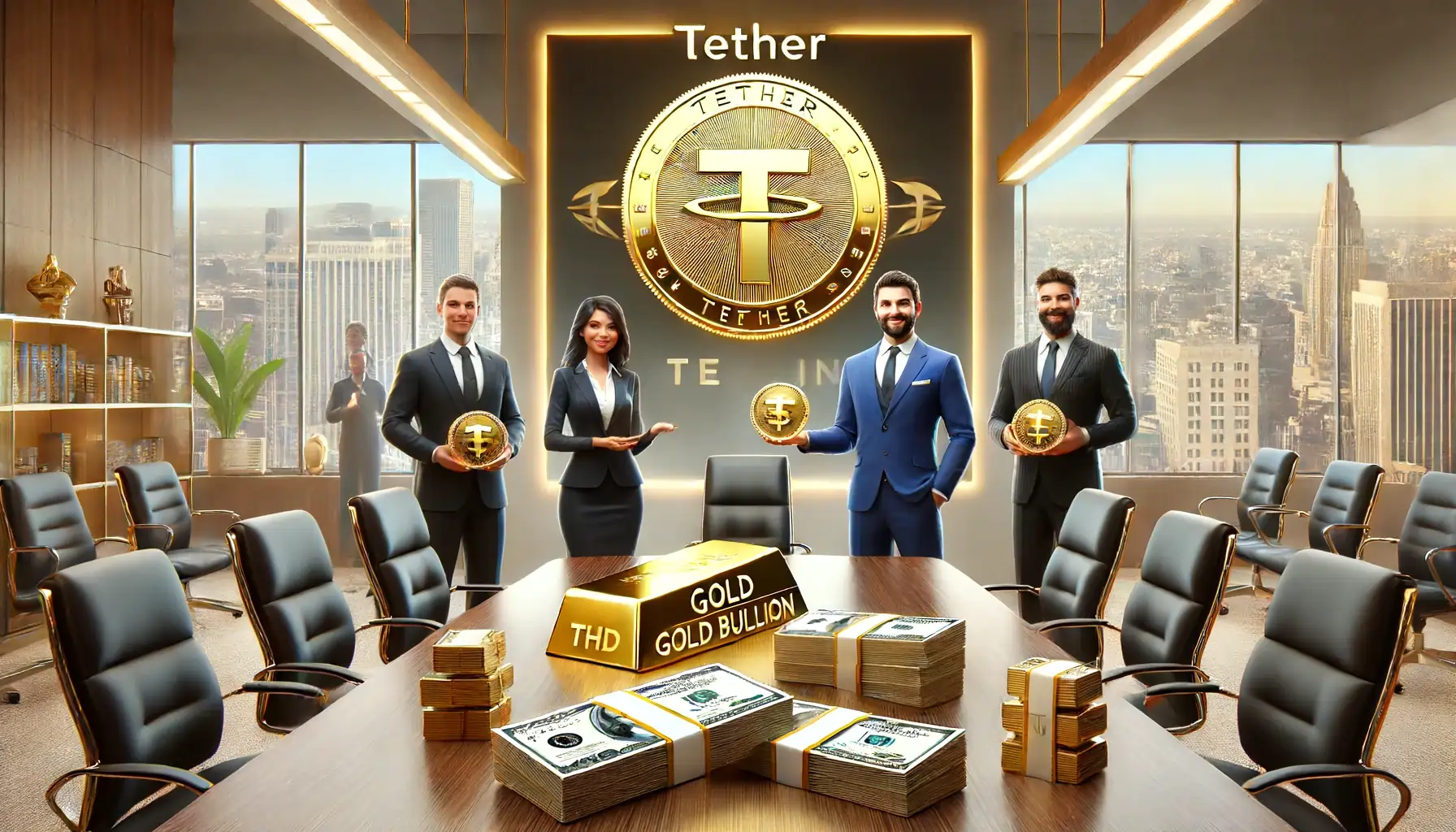Tether has announced the introduction of a new gold-backed stablecoin pegged to the U.S. dollar, named Alloy (aUSDT). This move marks Tether’s first tethered asset, as the issuer seeks to expand its offerings in the digital asset space. The new cryptocurrency can be minted on the newly launched Alloy by Tether platform.
Overcollateralization and Stability
Alloy will be overcollateralized by Tether Gold (XAUt), a token that provides ownership of physical gold, but it will be pegged to the U.S. dollar. This structure defines the new token as a synthetic dollar, designed to emulate the value and functionality of the U.S. dollar without being directly backed by it.
In an X post, Alloy explained that tethered assets are “digital assets that aim to track the reference price of another asset through different stabilization mechanisms.”
2/ Tethered Assets are digital assets that aim to track the reference price of another asset through different stabilisation mechanisms.
— Alloy by Tether (@Alloy_tether) June 17, 2024
They further stated:
“Alloy by Tether provides long-term holders the opportunity to maintain exposure to gold, while in parallel obtaining a dollar-referenced Tethered Asset for payments and day-to-day economy.”
5/ Alloy by Tether provides long-term holders the opportunity to maintain exposure to gold, while in parallel obtaining a dollar-referenced Tethered Asset for payments and day-to-day economy.https://t.co/tuQikMJbJU
— Alloy by Tether (@Alloy_tether) June 17, 2024
Versatility of aUSDT
The Alloy platform also hinted at the possibility of creating other tethered assets, including yield-bearing products. The synthetic dollar can be minted by depositing XUSDT through a smart contract and price oracles. This allows users to make transactions with aUSDT while retaining their gold-backed Tether asset.
Developed by Tether subsidiaries Moon Gold and Moon Gold El Salvador, Alloy by Tether will become part of a larger real-world asset tokenization platform set to launch later this year, according to Tether CEO Paolo Ardoino.
aUSDT, the first Tethered asset, just launched!
aUSDT is a synthetic dollar over-collateralised by XAUt (Tether Gold).Alloy by Tether is an open platform that allows to create collateralised synthetic digital assets and will soon be part of the new @Tether_to digital assets… https://t.co/J8JyWt9duh
— Paolo Ardoino 🤖🍐 (@paoloardoino) June 17, 2024
Not the First Synthetic Dollar
While Tether’s aUSDT is innovative, it is not the first synthetic dollar. In August 2022, Galoy introduced a Bitcoin-based synthetic dollar called Stablesats on the Lightning Network. Additionally, Ethena Labs launched its Ether-backed, dollar-pegged USDe in February, which gained significant attention and some skepticism. Another variation on the synthetic dollar concept came from Asymmetry in June with an algorithmically balanced synthetic dollar.
An analyst has noted that aUSDT may have advantages over USDe and other stablecoins due to Tether’s high liquidity and centralized control, which potentially offers “smarter decision-making and less principal-agent risk.”
Tether just announced what will likely be their second-biggest product ever: a new stablecoin backed by gold.
Tether is running the Maker horizontal expansion playbook in the opposite direction, starting with 1:1 treasuries then expanding into more exotic hybrid and eventually… pic.twitter.com/9uPH5HmHaK
— foobar/ (@0xfoobar) June 17, 2024
Incentives for USDT Holders
Tether has incentivized the adoption of the new asset by offering USDT holders a bonus at a 2:1 ratio, setting aside 10 million aUSDT for this purpose. This initiative is expected to attract significant interest from existing Tether users and new investors alike.
Tether’s launch of Alloy (aUSDT) represents a significant step in the evolution of stablecoins and synthetic dollars. By combining the stability of gold with the liquidity of the U.S. dollar, Tether aims to provide a versatile and secure digital asset for the modern economy. As the Alloy by Tether platform develops, it will likely become a crucial component in the broader landscape of real-world asset tokenization.

